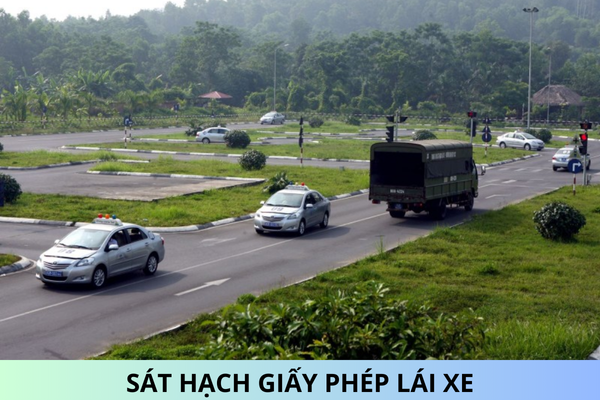What are regulations on management, equipment and use of weapons or combat gears regarding aviation security assurance in Vietnam?
What are regulations on management, equipment and use of weapons or combat gears regarding aviation security assurance in Vietnam? What are regulations on aviation security risk management in Vietnam?
What are regulations on management, equipment and use of weapons or combat gears regarding aviation security assurance in Vietnam?
Pursuant to Article 104 of the Circular 13/2019/TT-BGTVT (amended by Article 1 of the Circular 41/2020/TT-BGTVT) stipulating management, equipment and use of weapons or combat gears regarding aviation security assurance in Vietnam as follows:
1. The following persons shall be equipped with military weapons upon performing their tasks:
a) Aviation security control staff upon responding to acts of unlawful interference occurring at the airport or aerodrome or on board the aircraft;
b) Aviation security control staff upon performing tasks while level 1, level 2 and level 3 strengthened aviation security assurance measures are being taken;
c) Team members of the aviation security control force;
d) Mobile security staff and aviation security control staff who carries out patrols and standing guard at night;
dd) In-flight security staff equipped with appropriate weapons and ammunition upon performing tasks on board the aircraft.
2. The following persons shall be equipped with combat gears:
a) The persons specified in Points a, b, c and dd Clause 1 of this Article shall be equipped with one or more of the following combat gears: bulletproof helmets and bulletproof vests; shields, electric gloves; tear gas grenades; tear gas guns, rubber bullet guns and plastic bullet guns; devices used for spraying tear gas and anesthetics; stun batons, rubber batons, figure-8 handcuffs;
b) Upon carrying out patrols and standing guard in areas surrounding runways and taxiways, doors and gates adjacent to the aerodromes, restricted areas and public areas (terminals, parking lots), team members and aviation security control staff shall be equipped with one or more of the following combat gears: tear gas guns, plastic bullet guns and rubber bullet guns; stun batons, rubber batons, figure-8 handcuffs;
c) Upon performing the tasks of strengthening security of flights, coercing and escorting disruptive passengers and passengers denied entry, team members and aviation security control staff shall be equipped with one or more of the following combat gears: tear gas guns, plastic bullet guns and rubber bullet guns; stun batons, rubber batons, figure-8 handcuffs;
d) Upon performing tasks at a passenger, baggage and cargo checkpoint, the chief of the shift shall be equipped with one or more of the following combat gears: tear gas guns; stun batons, rubber batons;
dd) Upon performing the tasks of checking, monitoring and escorting cargo outside an airport/aerodrome, team members and aviation security control staff shall be equipped with one or more of the following combat gears: stun batons and rubber batons
3. Weapons and combat gears shall be stored as follows:
a) Upon performing their tasks, team members and aviation security control staff shall be equipped with weapons and combat gears shall strictly comply with regulations on inspection and storage of weapons and combat gears. When their tasks are completed or the shift is over, they shall transfer weapons and combat gears to the person responsible for management thereof or the person doing the next shift. The transfer of weapons and combat gears shall made properly and updated on a logbook, which bears signatures of the transferor and transferee;
b) Regarding frequently used weapons and combat gears, the unit equipped with weapons and combat gears shall have a separate cabinet to keep them, carry out routine maintenance and check storage conditions at the end of the week;
c) Regarding infrequently used weapons and combat gears, it is required to deploy a person in charge of storage and have a separate storage cabinet or warehouse. The weapon and combat gear warehouse shall comply with fire safety requirements and make regulations on access to warehouse; weapons and combat gears stored in the warehouse shall be regularly lubricated, properly and separately arranged according to each model. On an annual basis, authorities and units shall carry out technical inspection and maintenance on a periodic basis and in accordance with maintenance procedures established by the manufacturer;
d) The person assigned to store weapons and combat gears must have good credentials and morals and be responsible; has joined a basic training course on storage and use of weapons and combat gears; must strictly comply with inspection and storage regulations and prepare a logbook that records storage of weapons and combat gears.
4. The person equipped with weapons and combat gears must have a certificate of management and use of weapons, explosives and combat gears issued by the competent authority.
5. In December, authorities and units equipped with weapons and combat gears shall submit a consolidated report on management of weapons and combat gears, and training in storage and use of weapons and combat gears; classification by quantity and quality of weapons and combat gears; effective period of permit for use thereof; new, damaged or destroyed weapons and combat gears to the CAAV.
6. Persons equipped with weapons and combat gears shall comply with regulations on management, use, storage, inspection and maintenance of weapons and combat gears. Authorities and units managing and using weapons and combat gears shall specify regulations on management, use, storage, inspection and maintenance of weapons and combat gears in ASPs and ASRs.
What are regulations on aviation security risk management in Vietnam?
Pursuant to Article 105 of the Circular 13/2019/TT-BGTVT stipulating aviation security risk management in Vietnam as follows:
1. Aviation security risk means the probability of successfully committing an act of unlawful interference with civil aviation that is aimed at a specific target according to the assessment of threats or consequences and weaknesses or limitations.
2. An aviation security risk report means a document that defines aviation security risk levels and includes contexts, threats, weaknesses or limitations, consequences of terrorism scenarios and unlawful interference with civil aviation, and proposed minimization measures in the case of an unacceptable security risk level.
3. Aviation security risk management is an overall model in the system of aviation activities and meant to minimize risks, including: risk assessment, adoption of preventive security measures and adjustment to the applied measures.
4. Authorities, units and enterprises assigned by the law to be in charge of aviation security assurance shall manage aviation security risks within their jurisdiction; prepare aviation security risk assessment reports, on a biannual or unexpected basis (if it is discovered that threats, limitations and weaknesses in aviation security assurance pose a high risk), review and amend security risk assessment reports and disseminate to the reports to authorities and units mentioned therein to take appropriate minimization measures.
5. The development and adoption of aviation security measures, procedures, regulations and standards or development of plans for aviation security assurance and response to acts of unlawful interference with civil aviation shall be based on the results of assessment of aviation security risks.
6. The CAAV shall direct the aviation security risks management by aviation-related authorities and units; collect and exchange information with relevant authorities, prepare aviation security risk assessment reports and manage aviation security risks. Aviation security risk assessment results shall be reported to the Ministry of Transport and National Civil Aviation Security Committee as prescribed.
7. Airport/aerodrome operators shall preside over and cooperate with relevant authorities and units in assessing and defining levels of aviation security risks at airports and aerodromes on a biannual or unexpected basis.
8. The CAAV shall establish an aviation security risk assessment council for the aviation industry. Every airport/aerodrome operator shall establish an aviation security risk assessment council at its airport/aerodrome. Members of the aviation security risk assessment council shall work part-time.
Best regards!










